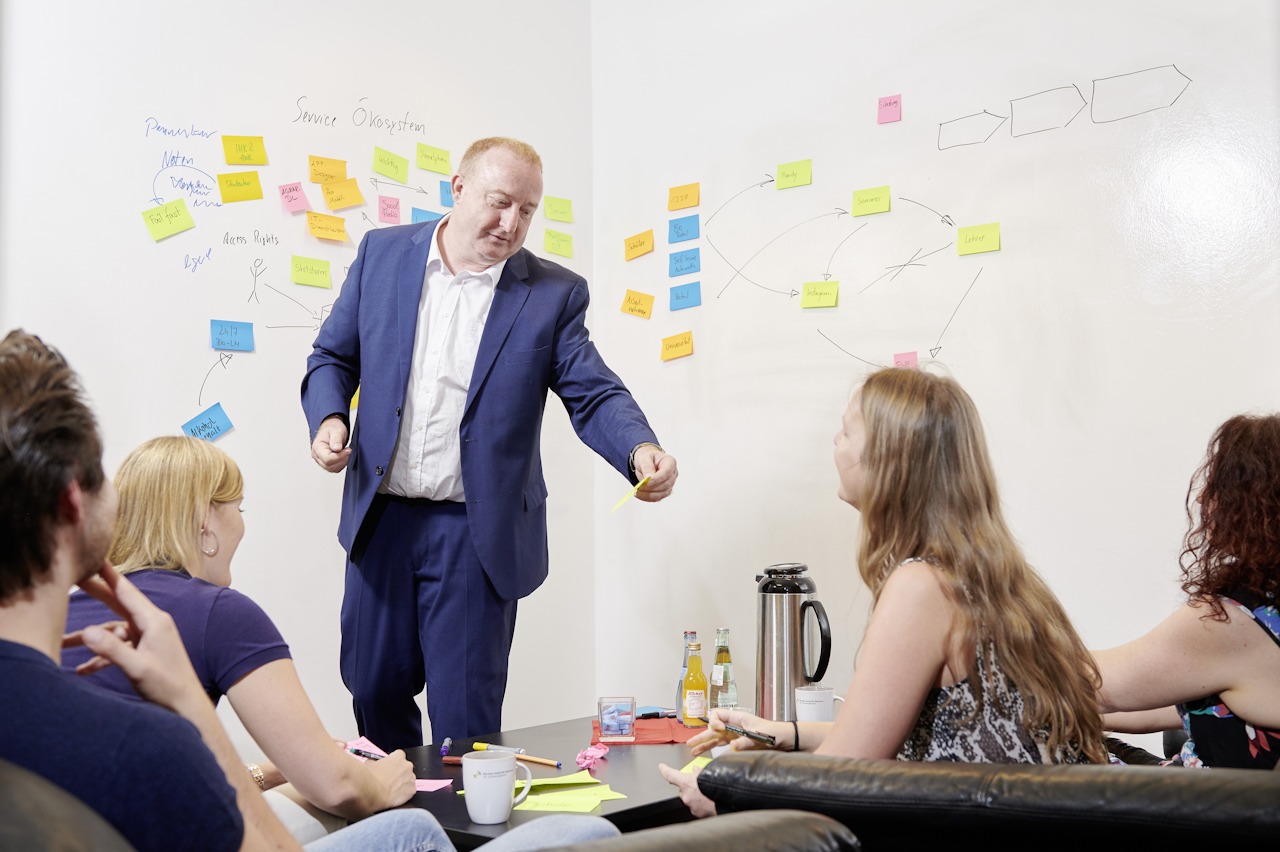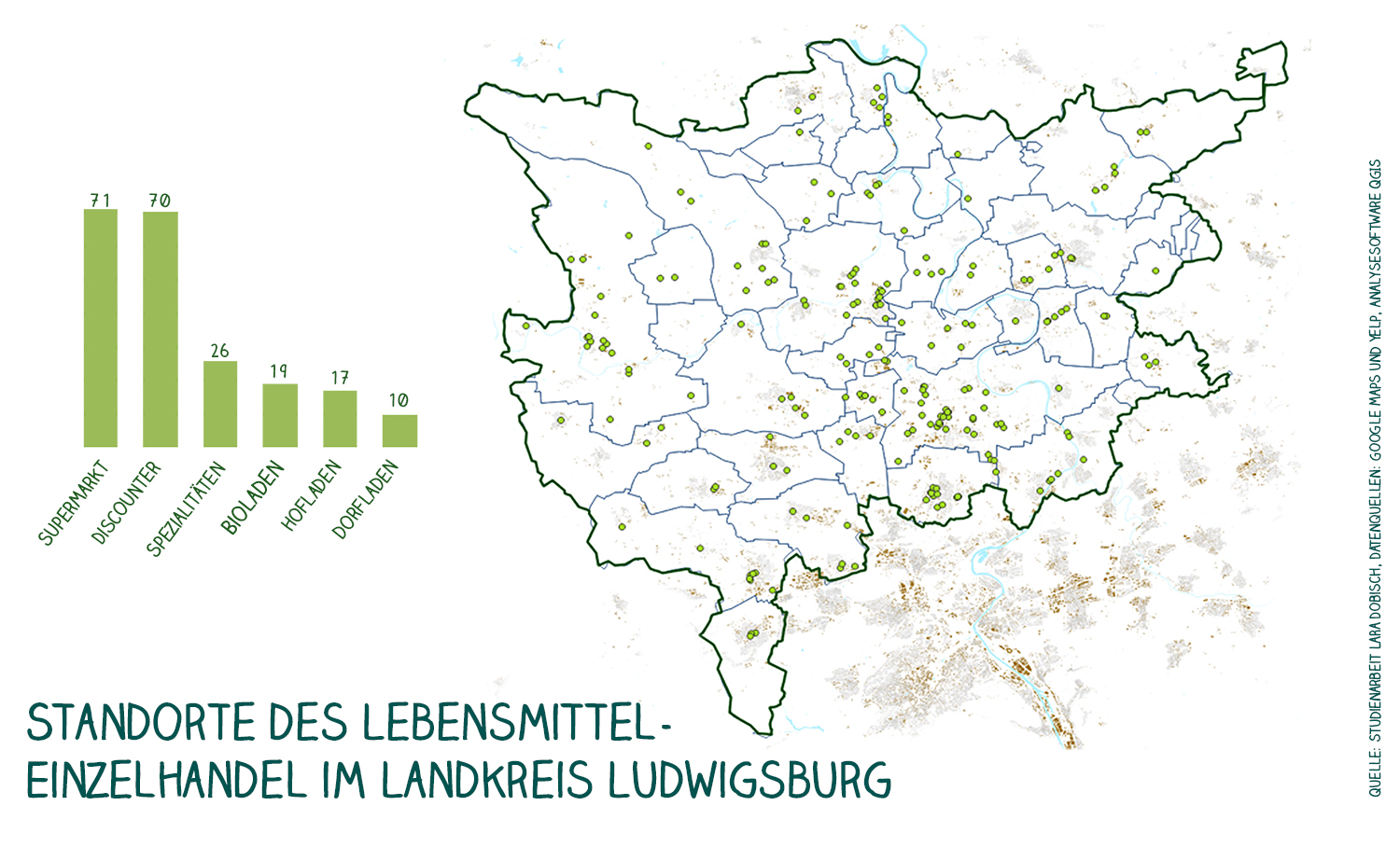Main navigation
Sensors for the bioeconomy
Sensor networks are one of the keys to achieving digitalisation of the bioeconomy. Sensor networks are on the way to becoming important analysis and control instruments for energy-efficient and sustainable material cycles. Dieter Hertweck, Professor of Business Information Systems at Reutlingen University of Applied Sciences, shows what is already possible in digital agriculture and waste recycling and what is feasible for the future.
“Digitalisation is an up-and-coming, rapidly growing area in the bioeconomy, which stands to benefit greatly from what is happening,” says Prof. Dr. Dieter Hertweck. Hertweck uses sensor networks to better understand and control material cycles of all conceivable sizes, all aimed at achieving sustainability. The business information scientist researches and teaches at the Herman Hollerith Centre (HHZ) on the Reutlingen University of Applied Sciences’ Böblingen campus. His approach to the bioeconomy is based on his research focus on energy efficiency. “We are looking for new solutions to improve energy efficiency in urban living areas and are analysing a city’s entire metabolism. Waste management is a key topic here. How can municipalities, for instance, handle food waste and green waste sustainably? Does it make sense to ferment these substances to turn them into biomass and produce biogas from them? And can energy efficiency be increased in this way? These are some of the questions to which we are seeking answers,” says Hertweck.
Sensor networks in agriculture

Hertweck believes that food supply is another domain where sensor networks can be applied. “We want to look more closely at food supply chains. Take vegetables for example: we are looking to make a connection between energy and fertilisation scenarios associated with cultivation and actual material flows from field to plate,” explains Hertweck. Moisture and temperature sensors that provide information about soil condition are used directly on fields. A sensor network can then automatically indicate the appropriate time for agricultural activities such as sowing and fertilising. This information can easily be sent to smartphones. The additional use of insect sensors is particularly innovative. “In one cooperative project, we are using sensors with cameras and microphones. Each type of insect has its own polygon, a kind of outline pattern that, for example, can distinguish a fat bee from a thin one or a cockchafer. A message is sent to the farmer’s smartphone when the sensor detects the outline of pests,” explains Hertweck. Early intervention helps minimise the pest control effort. "Overall, sensor networks like these can help manage agricultural areas more efficiently with fewer chemicals," summarises Hertweck.
The sensors are commercially available, generally inexpensive parts that only rarely need to be modified by experts from the Reutlingen University of Applied Sciences. The innovative development work lies in the overall system. It is the sophisticated interaction of the digital components that makes the technology so interesting. "And of course, it all needs to be as intuitive as possible for users who might be either farmers or retailers," adds Hertweck. The question remains as to how the sensors actually send and receive data. This requires aerials, which, at less than a metre long, are surprisingly small and inconspicuous. “Aerials have been purchased and installed (for example on fire-fighting towers) for almost all municipalities in the administrative district of Böblingen. Our university building and the Böblingen/Sindelfingen software centre are also equipped with aerials. By late 2019 we will have covered almost the entire region with aerials,” said Hertweck.
Many pieces of the puzzle together paint a clear picture and make decisions easier

This brings the very big approaches closer. Hertweck's vision for the future is to connect large-scale sensor networks with other data sources and thus provide a comprehensive data-based basis for decision-making. For example, the network of various sensors installed on cultivated areas could be combined with satellite data: “Aerial photos, such as those from Google Earth, can be used to catalogue fields, forests, meadows and so on using image recognition. If we then also include data from cultivation associations, taking into account the average paths of consumers to shops and look at the density of food markets, we could find out, for example, how to achieve a sustainable supply of regional food.”
Such analyses can contribute to political and societal decision-making. For example, when it comes to creating certain incentives for farmers. The first self-managing ecosystems that use sensor data and blockchain technologies for decision-making already exist. “They will revolutionise future forms of sustainable economies. A good example is 'terra0' developed at the FZI Karlsruhe, which turns the forest ecosystem into an autonomous economic unit that is based on environmental data, climate forecasts and a predetermined set of eco-friendly and economic rules. It manages itself without human involvement and can virtually decide its own deforestation and afforestation policies,” says Hertweck. He believes that it will soon be possible to transfer such scenarios to agriculture.
Sensor networks can collect large amounts of data. When it comes to dealing with the data, Hertweck is an advocate of a more open approach. “Of course, as regards security-critical services, it is possible and indeed essential to handle access to data in a restrictive and lawful manner. But basically, once it is processed, our goal is to make people’s data freely available and open again. That is why the software used is open source. Schools can also use the network freely, for example to manage their grounds in an environmentally friendly way,” says Hertweck. As a scientist, he is committed to the common good. He is constantly looking to exchange with other like-minded people in research institutions, associations and initiatives at home and abroad in order to significantly expand the possibilities of digital sensor networks.
Herman Hollerith Centre (HHZ)
The Herman Hollerith Centre is a teaching and research centre at Reutlingen University. It is based in Böblingen and belongs to the Faculty of Computer Science. Amongst other things, the research teams develop digital business models for companies, municipalities and energy providers.